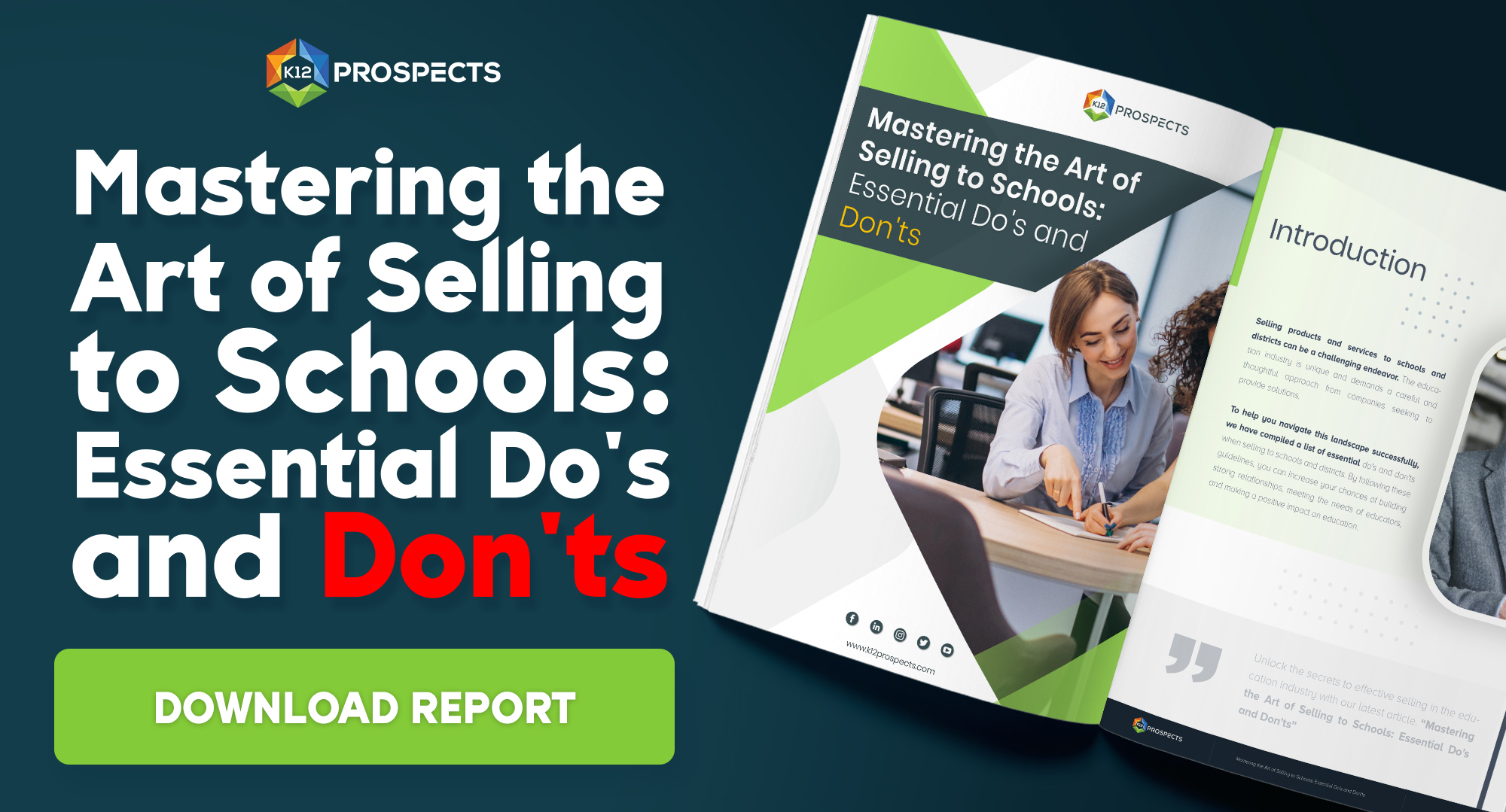Building Strong Relationships with K12 Schools and Districts through Email Marketing

Email marketing for K12 schools and districts shares many similarities with nurturing relationships or building new friendships. It begins with a memorable first impression, evolves through positive interactions, and culminates in a lasting, mutually beneficial commitment.
Like any meaningful relationship, successful email marketing requires understanding the needs of your audience and delivering what they need.
As we transition from a third-party to a first-party data ecosystem, it’s essential to know how to approach this bonding process with your audience effectively.
Email remains a dominant marketing channel, but this is true for your competitors as well. So, how do you ensure your emails stand out and build a lasting relationship with your customers?
Our team at K12Prospects has witnessed the evolution of email marketing and understands what factors help nurture relationships. We present five proven tactics to turn your email marketing into a relationship-building machine.
1. Play by Your Audience’s Rules
Understanding and respecting your audience’s preferences is crucial. Personalization is not just a buzzword; it represents a deep understanding of your audience.
Personalization goes beyond efficient selling. It’s about showing your customers that you understand who they are and what they need, thereby providing them with the best experience.
Email, being a more intimate medium, offers an excellent opportunity to do just that. You are in their inbox alongside their family, friends, and colleagues, so respecting their data and preferences is vital. By treating their data with respect and using it to provide unique experiences, you increase your chances of being invited back.
It is important to highlight the importance of personalization: “Email is a familiar channel where consumers expect some degree of personalization, so they are willing to provide data to create a more tailored experience.”
Gather preferences upfront through preference centers or intermittently through interactive forms or surveys. Using AI can also help ensure your messages are sent at optimal times, keeping you on the guest list.
2. Consistency and Continuity
Consistency is important, but continuity is even better. Instead of sending disconnected one-off messages, consider a cohesive drip campaign that allows your messages to build on each other.
A well-crafted drip campaign functions like a story, with each email adding new elements and building on previous ones. This approach keeps your audience engaged and looking forward to what comes next.
Email marketing is perfect for personalization due to the direct communication with the consumer. It allows for hyper-personalized and automated outputs using extensive data.
3. Active Listening and Learning
Email is not just for sending messages; it’s also a tool for gathering valuable data. With first- and zero-party data becoming more critical, email offers a prime opportunity for active engagement through forms, live polls, or special offers.
“Email marketing gives valuable insights and enables you as a marketer to learn a lot about school teacher’s and administrator’s preferences based on email engagement. This data, especially zero-party data, is invaluable for understanding your audience’s needs.
4. Providing Value in Every Email
Not every email should be a sales pitch. Building relationships involves providing value beyond just selling. Follow-up emails, samples, informational updates, and engaging stories can all help strengthen your relationship with your audience.
Even transactional emails like cart abandonment or confirmation messages are opportunities to reinforce your brand voice and show your commitment to personalization.
5. Learning from Every Interaction
Not every email will be opened or read, but each interaction provides valuable insights. Use data from these interactions to optimize your future emails.
A/B testing can help you determine the most effective elements of your emails, from subject lines to content, allowing you to refine your strategy continually.
Conclusion: Keep the Conversation Going
Building relationships involves continuous learning and adaptation. Email marketing helps you build these relationships by personalizing, learning, and adjusting over time. It’s not just a way to pitch your audience but also a tool to entertain, educate, and understand them. And that’s the essence of building strong, lasting relationships.



